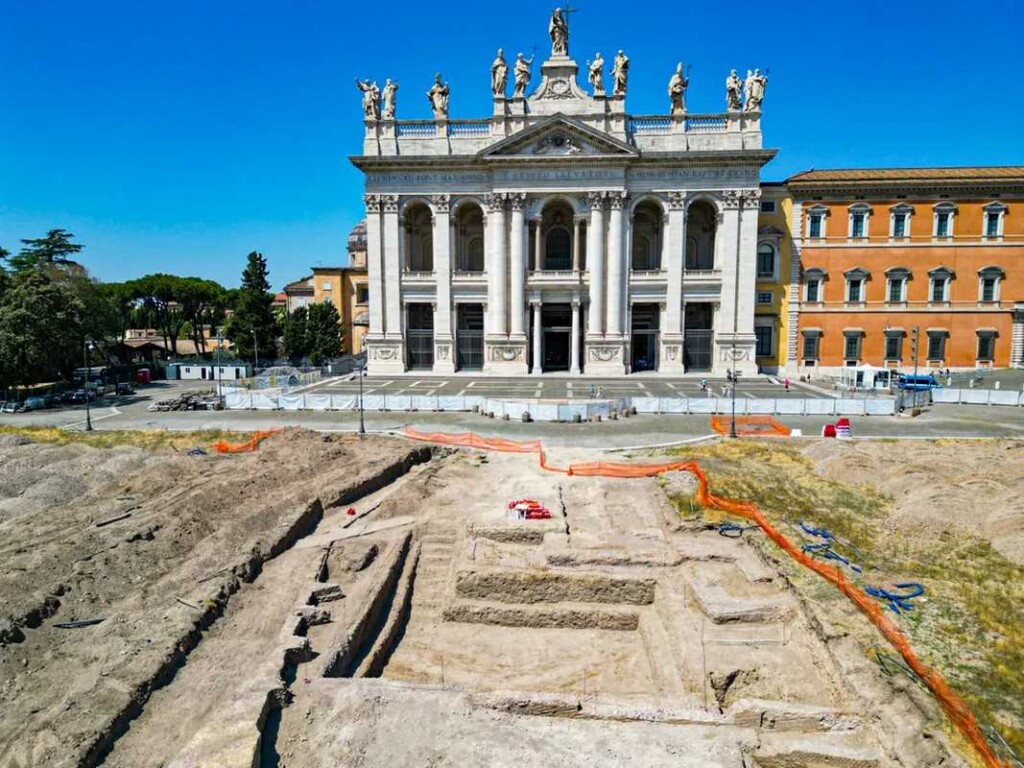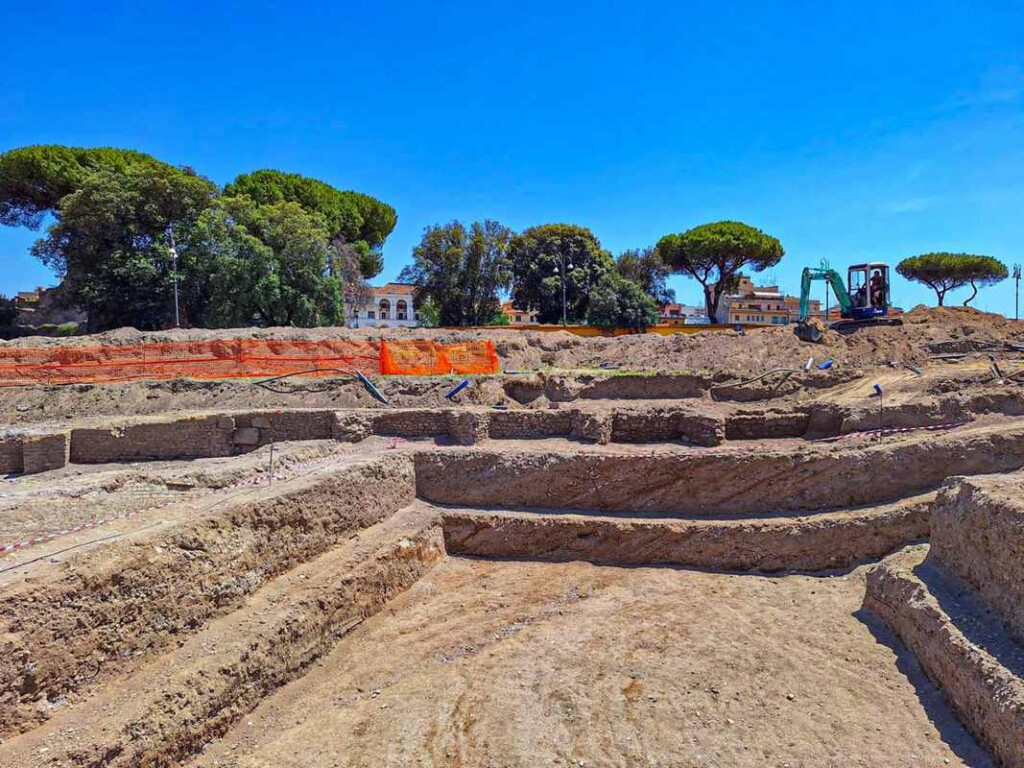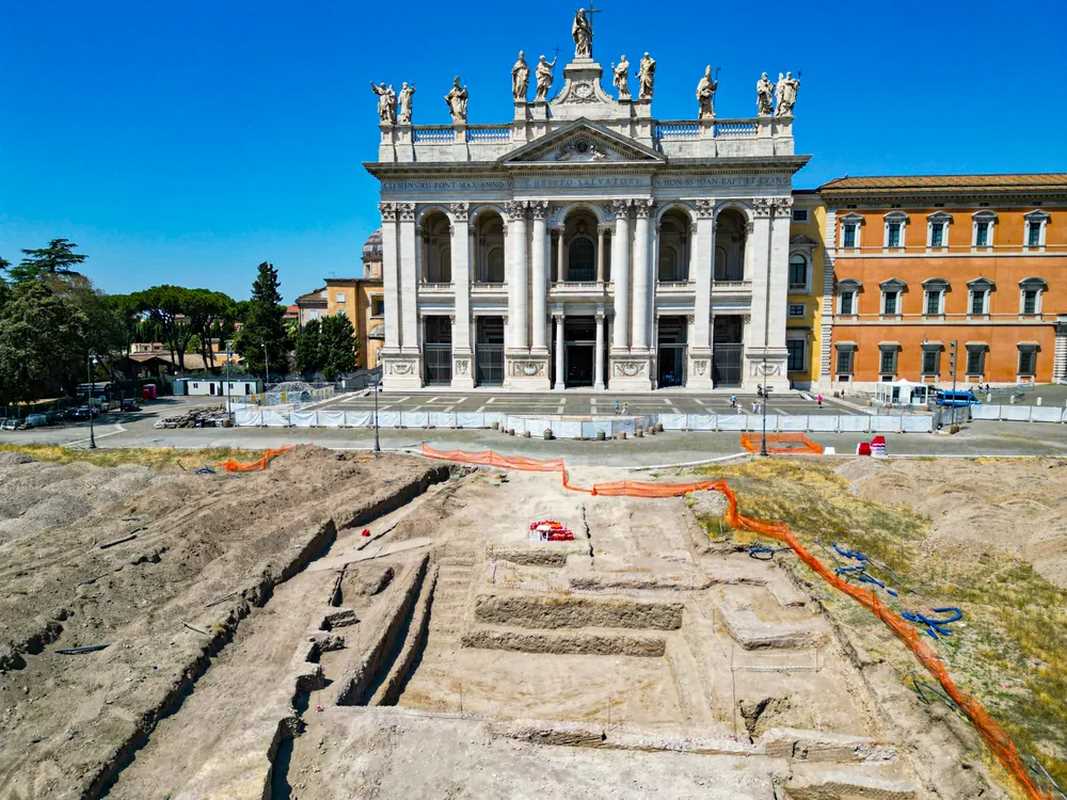
Woe betide anyone who plans road construction in Rome.
In late July, news headlines brought the world up to speed regarding ongoing excavations of the previous center of the Catholic Papacy—the Patriarchio, a palace of Papal authority dating back to the late Roman Empire.
Discovered during roadwork in the plaza in front of the Archbasilica of St. John Lateran, a series of walls are believed to represent defense works that protected the Patriarchio in the heart of the Eternal City.
Finished in 313 and known as the Lateran Palace, the site served as the seat of the papacy following Emperor Constantine’s Edict of Milan that promoted religious tolerance of Christianity across the Empire.
The complex of religious and administrative buildings gradually expanded outward until a comparatively brief period when the Papacy moved to Avignon in France.
“This is an extraordinarily important find for the city of Rome and its mediaeval history, as no extensive archaeological excavations have ever been carried out in the square in modern times,” the Italian Ministry of Culture, Gennaro Sangiulliano said.
“Every single stone speaks to us and tells its story: thanks to these important discoveries, archaeologists will be able to learn more about our past,” he added later.

2025 will herald a year-long pilgrimage event in Rome known shorthand as the Jubilee, and the excavations in the plaza in front of St. John Lateran were part of major renovations for the event, during which the city expects 30 million visitors.
WHAT LIES BENEATH THE ETERNAL CITY:
- This 2,300-year-old Mosaic Made of Shells and Coral Has Just Been Found Buried Under Rome
- Rome Finally Opens to Public the Spot Where Julius Caesar Met His End at Senators’ Hands
By the time the Papacy returned to Rome, the Lateran Palace was in disrepair and had suffered from fires and earthquakes. The defensive walls were ordered to be knocked down, and Pope Gregory XI moved the site of the palace to the Vatican where it remains today.
In the 16th century, Pope Sixtus VI arranged for the palace to be restored, and today it blends easily into the historic Roman cityscape. Three monuments survived and were incorporated into the building built by Domenico Fontana in 1589 opposite St. John Lateran. These monuments are the Scala Santa and the Chapel of the Sancta Sanctorum.
SHARE This Impressive Discovery With Your Friends Who’ve Visited Rome…




















